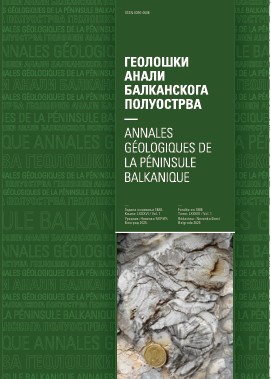New dasycladales and microbiota from the lowermost Valanginian of the Mirdita zone
Abstract
A rich diversified algal microbiota is described from the lowermost Valanginian limestone reworked in the Upper Cretaceous elastics of the Metohija Cretaceous Unit (Mirdita Zone). Two new dasycladalean taxa are introduced: Zujovicella nov. gen. (type species Suppiluliumaella gocanini Radoičić, 1972) and Furcoporella vasilijesimici nov. sp. Microbiota of this bioclastic limestone (containing dominantly corals and other metazoan fragments) consists of algae, microbial epiliths, microproblematica, foraminifera, calcispongie and a few calpionellids of the Calpionellopsis Zone - Calpionellopsis oblonga (Cadisch), Remaniella cadischiana (Colom), Tinntinopsella carpathica (Murgeanu & Filipescu). Besides the new taxa dasycladales also associated are: Salpingoporella pygmaea (Gumbel), Salpingoporella sp., Gyroporella lukicae Sokač & Velić, Neomerinae and several indetermined taxa. Lithocodium aggregatum (Elliott), other encrusting Lithocodioidea and different microbial epiliths are an important component of this microbiota association. Foraminiferal assemblage consists of: Coscinophragma cf. C. cribrosum (Reuss), Mohlerina basiliensh (Mohler), Nautiloculina bronnimanni Arnaud-Vanneau & Peybernes, Neotrocholina valdensis Reichel, Neo-trocholina sp. Placopsilina sp., Protopeneroplis trochangulata Septfontaine, Trocholina alpina (Leupold), Trocholina delphinensis Arnaud-Vanneau, Boisseau & Darsac, Trocholina sp., lituolids, miliolids and other small benthic taxa. The analyzed lowermost Valanginian limestone originated from the topmost sequence of the Tithonian-Neocomian cycle which ended as a consequence of the Main Cimmerian Events, which occerred, as in the Vardar zone, after the lowermost Valanginian. Cretaceous cycle (Mirdita Crtaceous Unit) begins in the Hauterivian.
Copyright (c) 2005 Geološki anali Balkanskoga poluostrva

This work is licensed under a Creative Commons Attribution 4.0 International License.










